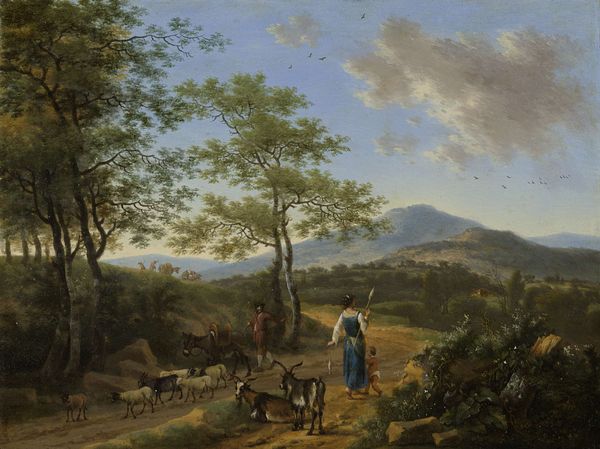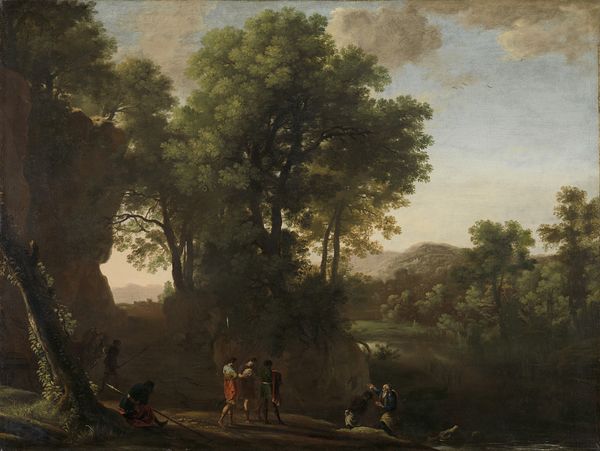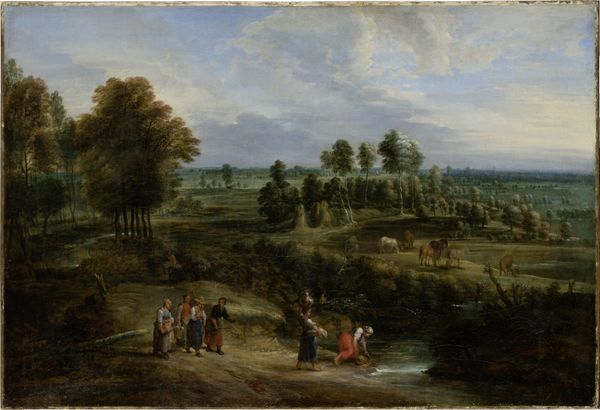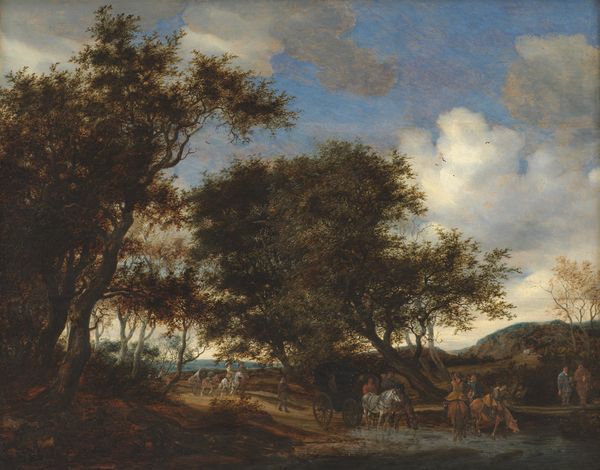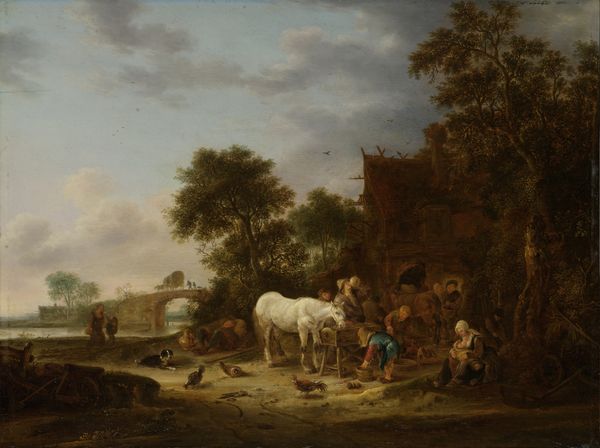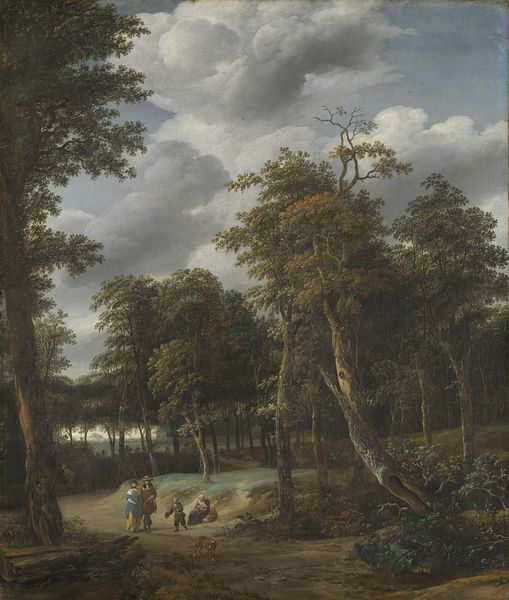
Portrait of a Couple with Two Children and a Nurse in a Landscape 1667
0:00
0:00
oil-paint
#
portrait
#
baroque
#
dutch-golden-age
#
oil-paint
#
landscape
#
figuration
#
oil painting
#
genre-painting
#
realism
Dimensions: height 148 cm, width 178 cm, depth 8.5 cm
Copyright: Rijks Museum: Open Domain
Adriaen van de Velde painted this family portrait in the Dutch Golden Age, a period defined by its burgeoning merchant class and their aspirations of nobility. The painting depicts a family in their finery, their clothes a not-so-subtle signifier of wealth and status. Yet it’s the positioning of the figures, and their relationship to the landscape, that offers an emotional and social narrative. A nurse sits off to the side, tending to a child, while the well-to-do couple stand centrally, a young boy and dog at their side. The vast landscape serves as a backdrop, underscoring their dominion. The work quietly acknowledges the social stratifications of the time. Van de Velde doesn't simply paint a portrait; he paints a world defined by class and status. The family seems to embody a narrative of social aspiration, but it’s tempered by the human elements of familial bonds and societal expectations. In the serene landscape, we find a reflection of humanity's complex relationship with status, labor, and legacy.
Comments
rijksmuseum about 2 years ago
⋮
When this picture went under the hammer in 1824, it was presented as a self-portrait of Adriaen van de Velde with his family. This myth persisted throughout the entire 19th century, and in part because of this it became one of the most admired attractions in Amsterdam. When it became clear that it was certainly not a self-portrait, interest in the painting diminished noticeably.
Join the conversation
Join millions of artists and users on Artera today and experience the ultimate creative platform.
